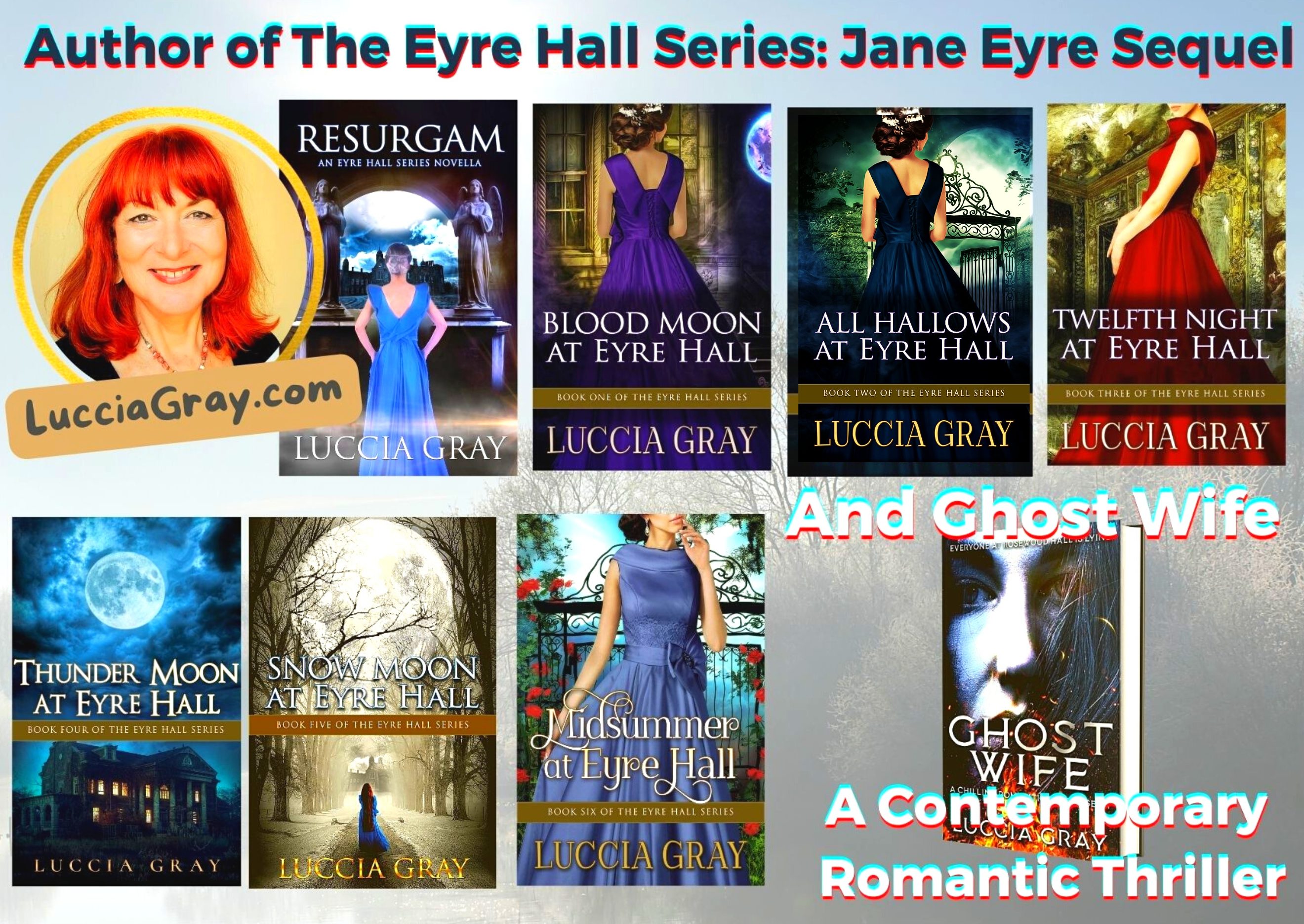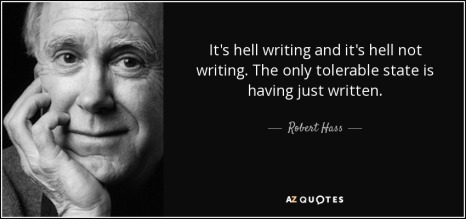How I write: A Descriptive (not Prescriptive) account of my Writing Process
A. Mulling: The Creative Phase
Before I actually start my formal planning, laid out below, I’ve been thinking of my novel, talking to my characters, and outlining loosely, for months, or even years…
I’ve ‘seen’ what will occur, how it will begin and end, and I’ve run through the main events in my mind. I also have plenty of handwritten notes, some scenes have been written or outlined, and I have plenty of ideas, which I need to organize in some way, otherwise my writing becomes too erratic.
I soon realized I needed to give it a shape I can visualize as a whole and handle in small chunks.
This is the organizational method I’ve found has worked for me in my three novels.
B. Organising: A Three-part Outline
I love Vonnegut’s quote:
Basically, Jane gets into some trouble, then she get’s into more trouble, and finally, she gets out of it… or not?
I divide my novel in the following three parts:
Part I or Exposition:
Jane gets into trouble.
Including Plot point one, also referred to as the tipping point or the inciting incident, which sets the action going. The reader will find out where and when the action takes place (context), what the book’s about (genre), and who the main characters are, and what they want. The main character will suffer the first major onslaught.
Part II The Story Unfolds:
Jane get’s into even more trouble.
Then comes plot point two, where the story starts to unfold and something happens to change direction or add to the crisis, leading to the climax, where the events move faster. Conflict is in the open. Secrets revealed. there is no turning back and the main character is in another or greater, complex dilemma.
The Final Outcome or denouement:
Jane gets out of trouble, but… not completely… yet (because I’ve written a trilogy).
Many types of novel, such as romantic, mystery, suspense, or detective, will have a happy, or satisfactory ending for the main characters. Other types of novels such as what is referred to as literary fiction, may have a more sombre or open ending. My novels include both types of endings.
In any case, I always make sure there’s another conflict or obstacle just before the end, to nudge the reader, so he/she doesn’t get too complacent!
C. Zooming in: Chapters
I plan ten chapters per part. This isn’t a strict rule for me, but it gives me a sense of balance and security, so I start with it. Some of my parts have more or less chapters in the final version.
My Chapter Outlines
I outline the chapter including the following points:
First I establish an aim. Why is this chapter here? What does it add to the plot or story?
I establish the narrator (POV), because my novels have various narrators.
I identify the other participants.
I summarize the main events, which happen or are discussed.
I usually write some of the dialogue.
I often add pictures.
I establish the research needed.
I write it all down often by hand, sometimes it’s typed, and all of it, including photographs, research notes etc., are all included into punched plastic filing sleeves, which I put into a ring binder, in consecutive order.
I never write chronologically. I write some of the events first. The ones I see more clearly, in no particular order and put them into the sleeve. Sometimes I start or write parts of chapters and return at a later date because the rest of the action will depend on other chapters, or because I can’t ‘see’ how it will continue, and I need to think it through.
I never sit and look at a blank page or screen. I’ve thought about and taken notes before I write, and if I ‘get stuck’ I get up and do something else. Sometimes I go for a walk and think about it, or I write another chapter, or I read something for inspiration, usually something by Dickens, or Jane Eyre (I could reread them forever!), or I just leave it and get on with the rest of my life! Sleeping on it often helps.
As I let the characters do the talking and listen closely, the story is alive and goes through many changes, such as, chapter orders, narrator, etc. I even scrap or merge some chapters, or realize I need another chapter I hadn’t thought of, etc.
D. The First Draft: The hard slog 😦
Once my novel is all there, in bits and pieces, classified in plastic sleeves, I gradually type out the messy contents, again in no particular order, wherever my inspiration or mood takes me. I do this on a kindle template and make sure I back it up on my memory stick and at least two PCs.
When I finally finish my first draft, it looks decidedly messy, and there are some ‘gaps’ or incomplete chapters, but it’s all there, at last. So now I need to get back to it chronologically. I print it all out and make hand written notes to fill in the spaces, improve, add, remove, rewrite, etc..
This is the hardest part, but it’s also the most satisfactory, because when I finish I have a novel (more or less).
E. Second and Subsequent Drafts.
This is the point where I start setting up the publishing process.
I can upload my novel for pre-order, I have three months to upload the final version.
I contact my editor to book dates, cover designer, beta readers, and I start thinking about/planning a marketing strategy, and I apply for my ISBN.
Finally, I start panicking and working to a strict timeline, to force myself to complete the novel in 4-5 weeks.
I read it through again, chronologically and critically, to make sure it flows and search for inconsistencies, etc.
There is a lot of work at this stage, and I usually need to make changes or do some more writing.
When I’m reasonably pleased with the second draft, I reread it aloud, and make more, usually minor, changes.
This third draft is the point I usually send it to my beta readers and wait.
F. Tinkering
The novel’s all there, but there are lots of little things such as, typos, small inconsistencies, things which need clarification for the reader, so I tinker again after my beta readers’ feedback.
For example I changed the ending, by adding a final short scene, just a few pages, in my second book, due to my beta readers’ suggestions, and even eliminated a minor character, whom they convinced me was superfluous.
Then it goes to my editor, who makes some more suggestions, and I make some more decisions and tinker again.
My fifth and final version goes to my editor again for a second edit, which is really the ‘proof read’, because I’m not making any more changes at this stage, mainly to preserve my mental health!
I write my first draft in a kindle template, so I don’t need to do too much in the way of formatting, but it takes time to upload, check, and recheck the final version on Amazon.
G. Promoting and Marketing.
This actually comes way before now, at least four to 6 weeks before it’s published, although it starts happening nearer to the publishing date and after. It includes planning Blog tours, cover reveals, interviews, guest posts, and booking advertising spots on online sellers, contacting readers / fans (I have a few lovely, loyal readers who get ARCs), etc.
Sounds tough? That’s because it is.
‘If writing seems hard it’s because it is hard. It’s one of the hardest things people do.’ William Zinser, author of, On Writing Well.
Why do writers write? Easy, because we can’t not write.
“It’s hell writing and it’s hell not writing…” Robert Hass
In other words:
“A non-writing writer is a monster courting insanity.” Kafka.
So, please don’t be a monster, keep writing and finish your novel!
How do you write your novels?







Just what I needed. 🙂
LikeLiked by 1 person
So glad to hear that, Matt 🙂 I’ve been reading too many light romances lately, I need an action packed paranormal thriller asap!
LikeLike
Great post. Book-marking in case I ever get to a novel! Lxx
LikeLiked by 1 person
I’m sure you will. The seed’s already there 🙂 You’re mulling right now😍
LikeLiked by 1 person
I have a few characters for an epistolary exploration..!
LikeLiked by 1 person
I knew it! Yessss 😀
LikeLiked by 1 person
So interesting to hear that you don’t write chronologically.
LikeLiked by 1 person